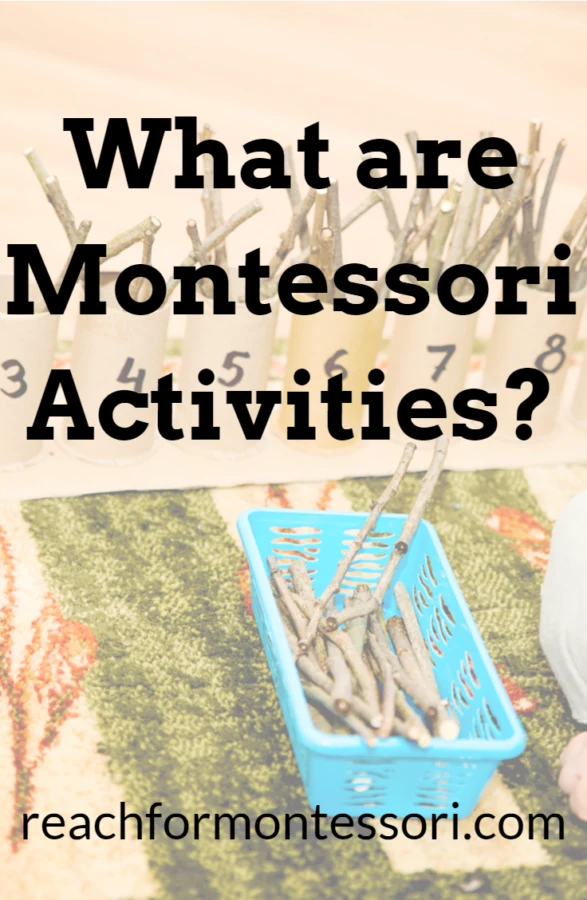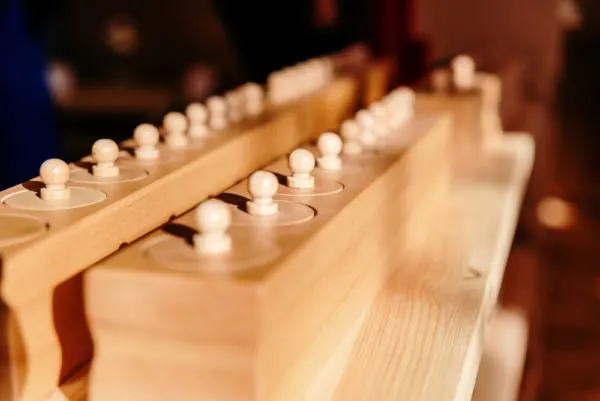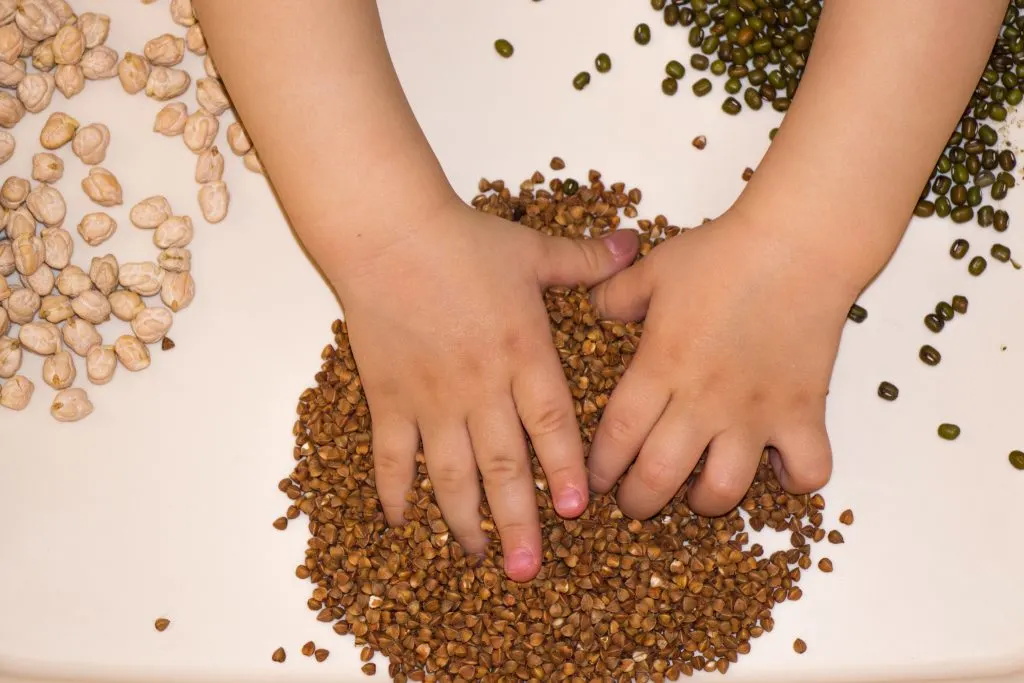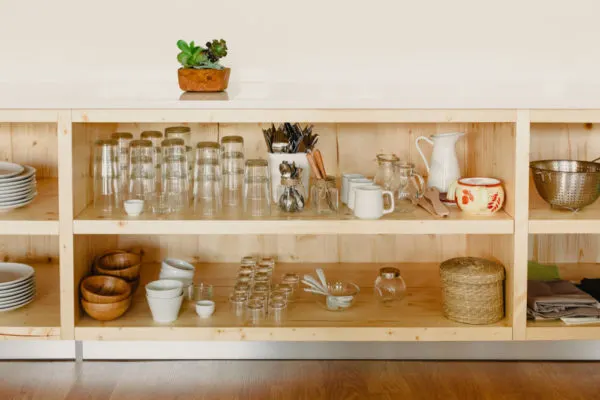If you’re new to Montessori, you may be feeling overwhelmed by the sheer amount of information out there about this century-old approach to learning and development. Rest assured that these anxieties are completely normal!
They are also somewhat unnecessary, though. While we Montessorians are sometimes guilty of talking in code—that is, there is a special language of sorts that goes along with the pedagogy—the core of our philosophy is actually quite simple and even instinctual.
In this article, we’re going to take a closer look at one of the fundamental components of a Montessori education—Montessori activities.

Questions You May Have About Montessori Activities
Newcomers to the Montessori community often want to learn as much as possible about the Montessori method in the shortest amount of time possible.
If this sounds like you, then pat yourself on the back—this level of enthusiasm is quite admirable, and it will set you up for success as a Montessori caregiver and teacher.
This post will attempt to address some of the common questions moms and dads have about Montessori activities such as:
What exactly are Montessori activities?
Do I have to purchase Montessori toys? Are they expensive?
Where can I find Montessori activities and learning materials?
What makes an activity Montessori?
Montessori Activities Demystified
Ask anyone outside of the Montessori community, and they’ll tell you there is a certain mystique surrounding all things Montessori.
Whether intentional or not, this distinctive cloud can be blamed for causing quite a bit of confusion surrounding the Montessori approach, including Montessori learning materials and activities.
In an attempt to define what makes a Montessori activity “Montessori,” we’ll discuss some characteristics of these types of learning activities.
Self-Correction
At its core, the Montessori method is all about fostering independence in children.
That’s why Montessori toys and materials tend to be self-correcting and don’t involve a whole lot of oversight from a parent or teacher.
Activities that a child can engage in on their own or alongside a peer are best as they instill self-confidence and autonomy.
To illustrate the concept of a self-correcting activity, think about a jigsaw puzzle.

The pieces either fit or they don’t; when doing a puzzle, you can easily see your mistake and take steps to correct it.
Other examples of self-correcting activities include nomenclature cards and cylinder blocks.
By engaging in self-correcting learning activities, a child masters skills without correction from an authority figure, which could trigger shame or low self-esteem.
They also teach children that mistakes are not failures, but rather opportunities to learn.
Sensory Engagement
According to Maria Montessori (and a whole lot of scientific research!), children learn best when their senses are fully engaged.
That’s why most Montessori activities will include elements that appeal to one or more of the senses.

Sensorial materials commonly found in Montessori homes and classrooms include wooden toys, sandpaper letters, and knobbed cylinders, for example.
Time spent engaged in practical life activities such as hand washing, dressing frames, and dishwashing as well as periods of outdoor exploration are also important elements of sensory play.
Montessori Activities in Practice
A lot of what makes an activity “Montessori” is not the toy or material itself but the way it is implemented within the environment.
Consider the following approaches to implementing Montessori activities in the home or classroom:
“Follow the Child”
“Follow the child” is a guiding principle of Montessori that applies to nearly every component of the pedagogy. Montessori activities are no exception.
This means that children should be given the choice to select learning materials that they’re interested in and engage with them as they wish.
Of course, teachers and caregivers will have some control over which materials are presented to children, but the ultimate choices regarding what activity they participate in, how they manipulate the materials, and for how long is up to the child him or herself.
This approach is a reflection of the respect that Montessorians have for children’s instinctual knowledge about what they need in order to learn necessary skills.
Uninterrupted Work Periods
In the Montessori environment, children’s play is referred to as “work.”
This terminology is an acknowledgment of the importance of meaningful exploration during childhood and also expresses the level of respect for children that is essential in Montessori.
Thus, for an activity to be a Montessori activity, time must be set aside for children to properly engage with the learning materials.
When children are given this time, as opposed to being rushed, they’re able to achieve the high levels of focus and concentration that are essential to learning.

The Prepared Environment
Another key principle of Montessori is the concept of the prepared environment.
By taking time to carefully arrange an environment for optimal learning, Montessori parents and educators can set children up for success in their learning experiences.
When it comes to Montessori activities, a prepared environment means an organized and attractive selection of learning materials that children have easy access to.
In addition, children should be presented with all of the necessary materials to complete an activity in order to reduce frustration and wasted time.
Finding Montessori Activities
Montessori has gained popularity in recent decades, and that’s good news for moms and dads who are looking for Montessori learning materials and activities.
That is to say that there is no shortage of supplies and ideas out there just waiting to be discovered!
In terms of cost, you can spend as much or as little as you want on these materials.
While you will certainly find some well-crafted (and pricey!) Montessori toys and manipulatives for sale, you can also do a web or Pinterest search and find some low-cost DIY projects that will often yield similar results.
At the same time, there are plenty of Montessori-style activities that can be done using everyday household items.
The possibilities really are infinite, so have some fun choosing the activities that best fit your budget and preference.
What Montessori activities do you and your children enjoy?
Cheers and don't forget to subscribe!

Ana Rodriguez
Friday 30th of July 2021
I am an educator from Australia and my room children are enjoying the Montessori approach I have in my Curriculum.A week ago we explored our 5 senses ( now I know that could be more of them) We used the Mistery box ! The children were engaged in describing and guessing the objects inside of the box only using their tactile sense. We also used the sand paper numbers to assist "my children "in their learning of number recognition and quantity. Thank you for help me to add different material for different children and learning styles.
Daisy Narang
Tuesday 25th of August 2020
Nice article. Any activity when presented with analysis of movements, and done by the children with choice and interest, and is repeated by them- becomes a Montessori activity. Thank you for sharing your thoughts!